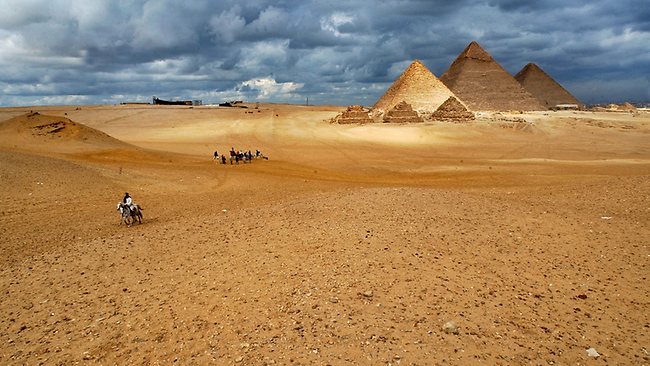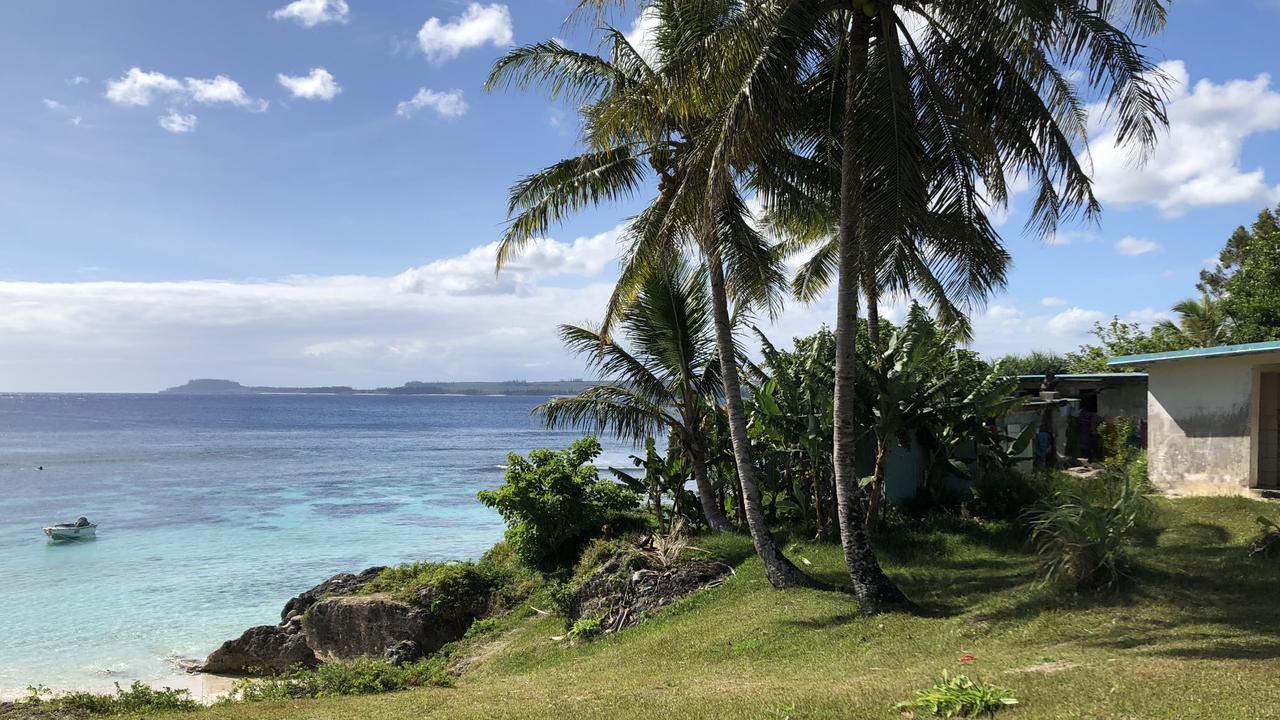The astounding antiquities of Egypt and Jordan
THE sheer scale of human achievements he found in the Middle East made Rory Gibson wish he had known more about the region before he visited.

IF YOU have ever harboured a yearning to see the Pyramids or visit the wonders of Petra, now is the time to go.
Because of the ructions caused by the Arab Spring revolutions, tourism to the Middle East has all but collapsed. That means two things: you don't have to fight for shoulder room among the hordes that in more settled times would flock to visit what are some of the greatest sights in the world, and there are terrific deals to be had as 5-star facilities throw themselves at anyone who looks like a tourist. Egypt particularly is suffering. Normally it would welcome about 14 million visitors a year, but that has almost halved as images of the violence in Tahrir Square in Cairo over the past two years have occasionally featured on news bulletins around the world. But Egypt is more than Tahrir Square. To not visit because of sporadic unrest centred on a few blocks in the centre of a city teeming with 22 million people would be akin to steering clear of Australia because of a spate of drive-by shootings in western Sydney. Ludicrous. As with all travel, you need to exercise common sense but, after a visit to Jordan and Egypt, I wouldn't hesitate to recommend that people go soon before the crowds return. I wanted to see how tourism was faring in the unsettled region and so tagged along on a small-group tour organised by Middle East specialists Bunnik Tours, starting in Jordan and taking in Egypt on a 17-day trip that was rich in both spectacle and experience.It was billed as a "highlights" package - a sort of greatest hits tour - starting in Amman, Jordan's capital, and ending in Cairo just over two weeks later, taking in Petra, the Dead Sea, Aswan and Luxor along the way. I didn't know much about that part of the world and went with the sole aim, really, of ticking the Pyramids off that list of things you think you should see before you join King Tut in the afterlife. But I was simply blown away by what I encountered, and in my opinion the Great Pyramids of Giza and the Sphinx that guards them are the least impressive of all the antiquities on offer. But they're still impressive! First though, Jordan, the Promised Land, the place to where Moses led his people and where he was buried. A country of stark beauty, you can stand on its mountains and see many of the places that feature in the histories of Christians and Muslims alike. It is a great place to start a foray into the Middle East, and not just because there is a lot to see there. It is laid-back, friendly and a beacon of tolerance in a region more known for strife, and beginning here helps put at ease anyone nervous about what they might encounter in an Arab country. Churches stand serenely within view of mosques, women dress in styles ranging from modern Western to full burka, and everyone seems to be having lots of laughs. Even the hawkers don't hassle you that much. The two must-see destinations in Jordan are Petra and the Dead Sea, for sure. But if you didn't visit the incredible Roman city at Jerash or gaze across to the Golan Heights and Lake Tiberius (aka the Sea of Galilee) from the vantage points among the ruins at Umm Qais, you'd be letting yourself down. It was at Umm Qais - what used to be the ancient city of Gadara - that my phone pinged with a text message from a telecom company saying "Welcome to Israel". That's how close to the action you are. There's also a smattering of UN tents harbouring refugees from Syria to be found on the fringes of most major roads, just to ram home the point. But you never feel anything other than safe. The reward for being brave and travelling to the Middle East is, without a doubt, seeing Petra. I knew little of its history and only had a vague notion that it featured some impressive facades carved into the cliffs, and in a way that ignorance made seeing it an even more intense experience. How can I describe it? It's like the Colosseum in Rome and the Acropolis in Athens had a child, and it hooked up with the Grand Canyon to produce Petra. What an amazing place it must have been more than 2000 years ago when it was a thriving Silk Road hub with 15,000 people living in homes hewn from spectacular rose-coloured rock. The Dead Sea is a must. It is a weird feeling being in it, because it's like the water is trying to push you up into the air. I wish someone had warned me, though, not to dive in with my eyes open, or that having a Turkish skin scrub that drew blood from every pore the day before would make swimming in the intensely salty brine a deeply unpleasant experience. So now you are warned. I left Jordan thinking that Egypt would struggle to match it for interest, but that again was more a reflection of my ignorance. If you are a fair-dinkum traveller interested in humanity's march through the ages and curious about things of significance that have happened on our planet, at some point you will have to visit Egypt. As in Petra, I found myself marvelling at what a magnificent place ancient Egypt must have been, and tried to imagine what it must have been like to live in a city such as Luxor, with the Karnak Temple at one end and Luxor Temple (with its twin obelisks, one of which now stands in the Place de la Concorde in Paris) at the other end, linked by an avenue of sphinxes. In 10 days there were so many highlights to savour - I loved being able to see the Pyramids from the hotel room in Cairo; a three-day cruise down the Nile was equal parts relaxation and insight into the importance this giant river has on the country; the three-hour drive across the Sahara to visit the twin temples built by the Pharaoh Ramesses II in the 13th century BC as a monument to himself and his queen Nefertari was worth every kilometre; the temples at Philae, Kom Ombo and Edfu, none of which I had heard of but am now thrilled to have seen; the stunning carvings and paintings that line the walls and ceilings inside the tombs in the Valley of the Kings; Saladin's Citadel standing guard over Cairo, and inside its walls the gorgeous Mohammed Ali Mosque; and the hours spent wandering the packed rooms of the Egyptian Museum in Cairo, which houses the treasures Howard Carter discovered in Tutankhamen's tomb, were mesmerising. To think such a civilisation as this thrived on Earth 4000 years ago makes it easy to see why some believe its architects were not of this world. The author travelled to Jordan and Egypt as a guest of Bunnik Tours. Go2 - EGYPT Highlights of Egypt Twelve days from $4688 a person twin share. Includes airfares, taxes, tips, 5-star hotels, luxury Nile cruise, many meals, expert Egyptologists and sightseeing. Highlights include Great Pyramids, Sphinx, Abu Simbel, Nile cruise, Luxor, Valley of the Kings, Karnak Temple and Tutankhamen's death mask at the Egyptian Museum. Highlights of Egypt & Jordan Seventeen days from $6036 a person, twin share. Includes airfares, taxes, tips, 4 to 5-star hotels, luxury Nile cruise, many meals, expert guides including qualified Egyptologist and sightseeing. Highlights include Lost City of Petra, Jerash, Dead Sea, Mt Nebo, Great Pyramids, Sphinx, Abu Simbel, Nile Cruise, Luxor, Valley of the Kings, Karnak Temple and Tutankhamen's death mask at the Egyptian Museum More: Phone Bunnik Tours on 1300 664 170 or visit bunniktours.com.au "Like" Escape.com.au on Facebook Follow @Escape_team on Twitter



